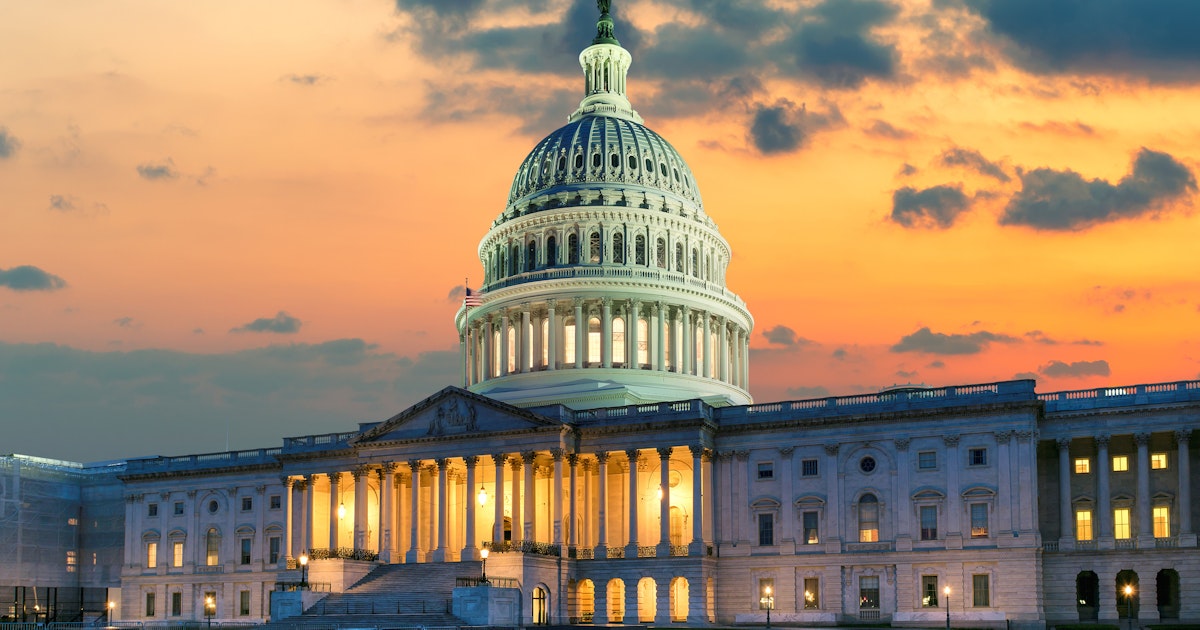For years, suggestions about reforming our broken immigration system have been met with the reply, “we can tackle that once we secure the border.” Given the crisis at our southern border, that was an appropriate response. Now, thanks to the efforts of President Trump and his Administration, the border is secure, and there are enough resources committed to ensure it stays that way.
This development makes possible what could be a signature achievement for the President and Congress that has eluded many others—commonsense immigration reform that will drive America’s economic growth.
President Trump has long acknowledged the need for more legal immigrants as President, as a candidate, and as a businessman. Increased levels of immigration across all skill levels and better educational and skills training opportunities for Americans are complementary efforts that together will help our economy grow.
Unfortunately, we haven’t adjusted many of our immigration programs since before the invention of the internet, and businesses of all sizes face a worker shortage. If we are to continue to drive business investment in the U.S., grow our economy and stay competitive with countries like China, America needs more workers of all skill levels.
A common misperception is that legal immigrants compete with American workers for scarce jobs. The reality, however, is that legal immigrants help grow the economy and support more job creation at higher wages. High-skilled workers on H-1B visas contribute to the growth of companies, which creates more jobs for everyone. And seasonal and agricultural workers help keep our farms, construction sites, and hospitality businesses up and running.
We also need to invest in our homegrown talent. Our education system has not kept pace with the needs of businesses in this global economy. A recent study from the U.S. Chamber and the College Board showed 84% of hiring managers agree most students are not prepared to enter the workforce out of high school. While there is a lot of interest in reforming our educational system, there is also a lot of entrenched opposition resistant to change. Our nation’s failing report card in math and sciences forces many businesses to create their own programs to address these challenges.
At the Chamber and our Foundation, we have over a dozen programs such as our Talent Pipeline Management initiative to align education programs with employer needs, our Hiring our Heroes initiative to place veterans with employers, and our recent partnership with the College Board to develop AP business courses that give high school graduates real-world experience.
To complement reforms to our education system, we need more legal immigration to help our economy reach its potential.
This year, there were over 470,000 petitions for high-skilled visas under the H-1B program, which has been capped at 65,000 new visas a year since 1990. An additional 20,000 visas have been available for holders of advanced U.S. university degrees since 2005. Foreign-born students flock to the United States for our world-class universities, and many of them wish to stay here and contribute to our economy. Without a robust visa program, these skilled workers are forced to take their talents elsewhere.
Instead of arbitrary caps, the Chamber supports a market-based approach responsive to the needs of our economy and demand for skilled workers. Congress should also take action to expand special pathways for certain high-skilled occupations that support our national interests, like staffing our hospitals and winning the AI race against China. And we would be eager to work with Congress on other commonsense reforms to the program.
Unfortunately, the Trump Administration’s recent decision to impose a $100,000 fee on all H-1B applicants moves us in the wrong direction by making it cost prohibitive for many businesses, especially small business and start-ups, to utilize the program. This is not only bad policy, it exceeds the authority the administration has in the law, which is why we filed a legal challenge to it.
We are also calling on Congress to update other visa programs that don’t meet the needs of our current economy. Programs like H-2A designed for seasonal labor prohibit certain industries like dairy from accessing visas due to their year-round need for a qualified workforce. This should be fixed.
Congress must also resolve the status of longtime workers in the United States who originally entered illegally but have not committed any other crimes. Policymakers must find a reasonable path forward for those individuals who have been contributing to our economy and our communities in some cases for decades now.
The good news is that there are serious legislative proposals in Congress that have established the framework for productive discussions. Rep. Maria Salazar’s (R-FL) DIGNITY Act combines tough enforcement with commonsense reforms to address visas, asylum, undocumented workers and the current immigration backlog. Rep. Lloyd Smucker’s (R-PA) Essential Workers for Economic Advancement Act would create a new H-2C temporary work visa program for essential non-agricultural workers to address labor shortages. And there are several other proposals from members on both sides of the aisle that signal serious momentum toward bipartisan reform.
As someone with a background in construction and hospitality who is also committed to the competitive success of America, President Trump knows how essential construction workers, farmers, chefs, hotel and resort staff, and high-skilled workers are to our economy. In fact, last December he said: “I always felt we have to have the most competent people in our country. We need competent people. We need smart people coming into our country. We need a lot of people coming in. We’re going to have jobs like we’ve never had before.”
We agree.
About the author Neil Bradley
Neil Bradley
Neil Bradley is executive vice president, chief policy officer, and head of strategic advocacy at the U.S. Chamber of Commerce. He has spent two decades working directly with congressional committee chairpersons and other high-ranking policymakers to achieve solutions.

